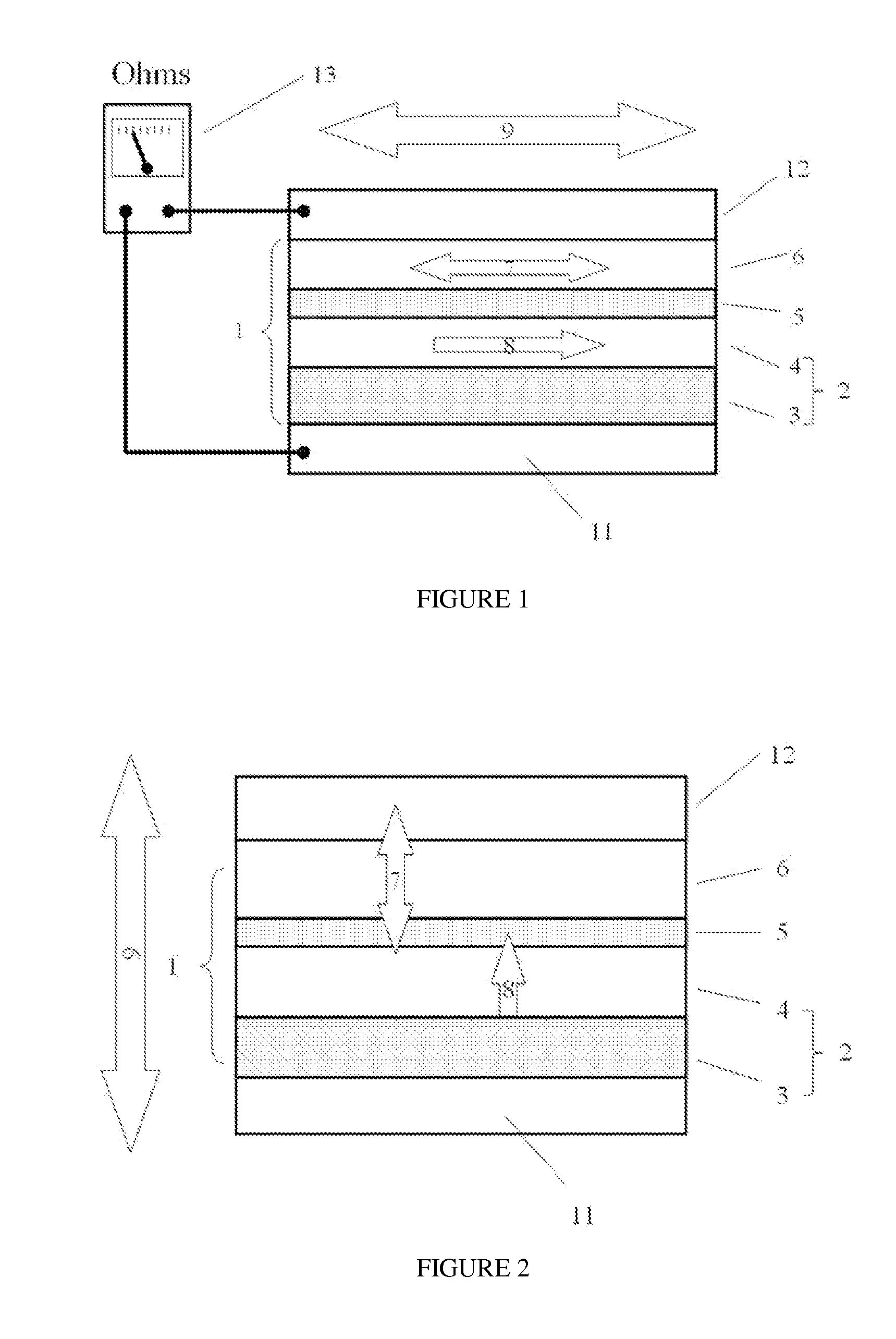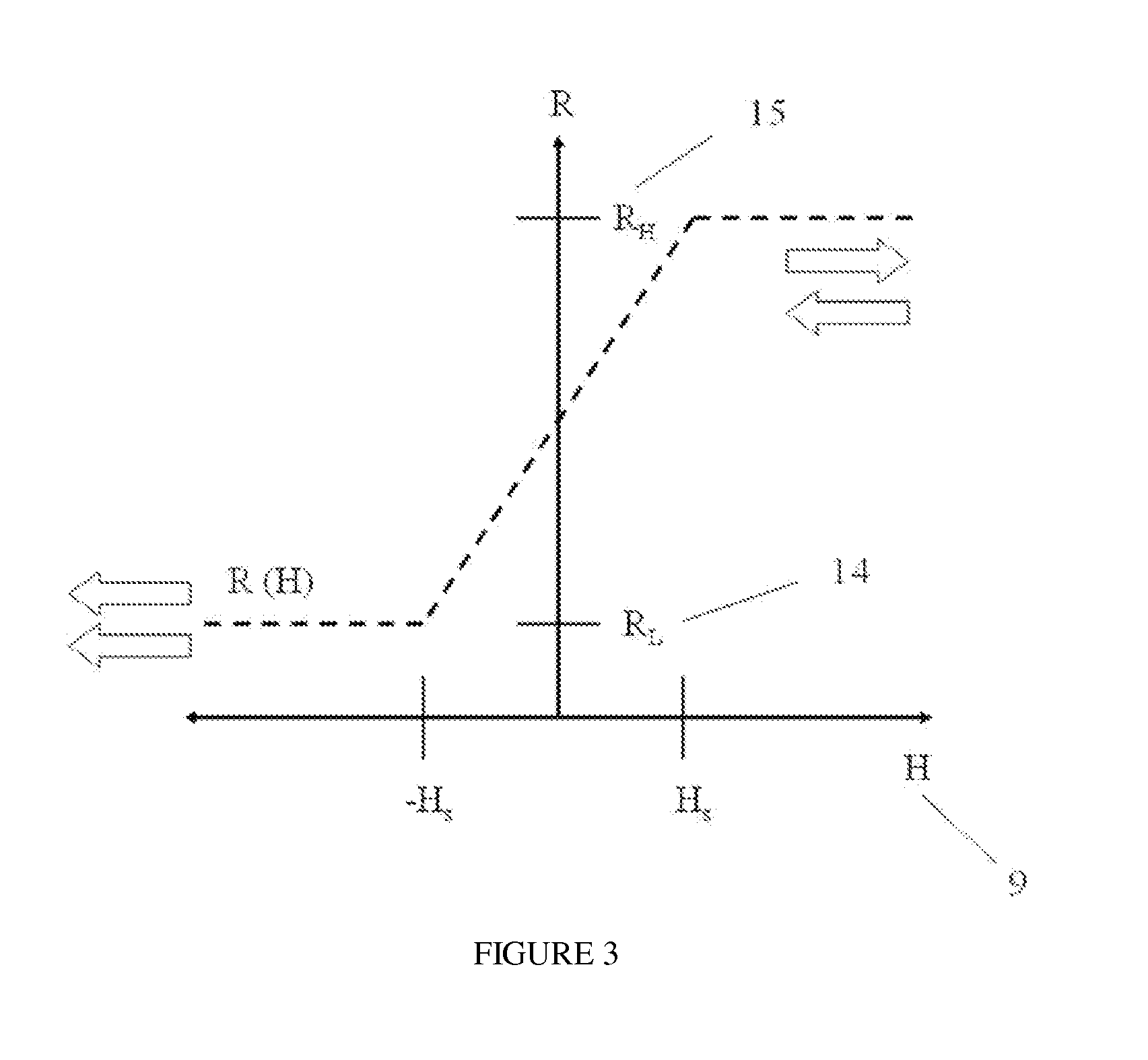Triaxial magnetic field sensor
a triaxial magnetic field and sensor technology, applied in the direction of magnetic measurement, single device manufacturing, instruments, etc., can solve the problems of excessive size, limitation of gmr triaxial sensor, difficult fabrication of single-chip three-axis sensor, etc., and achieve high sensitivity, low power consumption, and high integration
- Summary
- Abstract
- Description
- Claims
- Application Information
AI Technical Summary
Benefits of technology
Problems solved by technology
Method used
Image
Examples
first embodiment
[0077]in FIG. 13, the substrate 18 is wet etched to form the beveled groove, wherein MTJ elements are placed onto opposite slopes and connected through solder bumps to the ASIC component. The relative placement of the MTJ chips can cancel X and Y-axis cross-axis sensitivity and increase sensitivity to fields in the Z-axis direction. To enhance its sensitivity for the Z-axis direction the MTJ sensors can be a full bridges using various implementations including those shown in FIG. 8 and FIG. 10.
second embodiment
[0078]In FIG. 13, the substrate 18 prepared by wet etching to form the beveled grooves, and then MTJ bridge sensors are placed onto the opposite slopes of the groove and connected to the ASIC 19 through the solder bump, the corresponding placement the of the MTJ bridges can cancel X, Y-axis cross-axis sensitivity and increase sensitivity to fields in the Z-axis direction. The two MTJ the bridge magnetic field sensors can be push-pull full bridge sensor (FIG. 8) or referenced full-bridge sensors (FIG. 2).
[0079](2) FIG. 14 shows a vertically mounted MTJ bridge sensor. FIG. 14 shows vertically mounted MTJ bridge sensor schematic wherein the edge of the MTJ bridge sensor 20 has solder bumps 21 that are used to set the MTJ bridge sensor 20 onto the ASIC element 19 with a the 90° angle, and the solder bump 21 provides electrical connection to the ASIC 19, the chip is now sensitive to Z-axis magnetic field.
[0080](3) As shown in FIG. 2, the magnetic field bridge sensors may comprise perpend...
PUM
 Login to View More
Login to View More Abstract
Description
Claims
Application Information
 Login to View More
Login to View More - R&D
- Intellectual Property
- Life Sciences
- Materials
- Tech Scout
- Unparalleled Data Quality
- Higher Quality Content
- 60% Fewer Hallucinations
Browse by: Latest US Patents, China's latest patents, Technical Efficacy Thesaurus, Application Domain, Technology Topic, Popular Technical Reports.
© 2025 PatSnap. All rights reserved.Legal|Privacy policy|Modern Slavery Act Transparency Statement|Sitemap|About US| Contact US: help@patsnap.com



